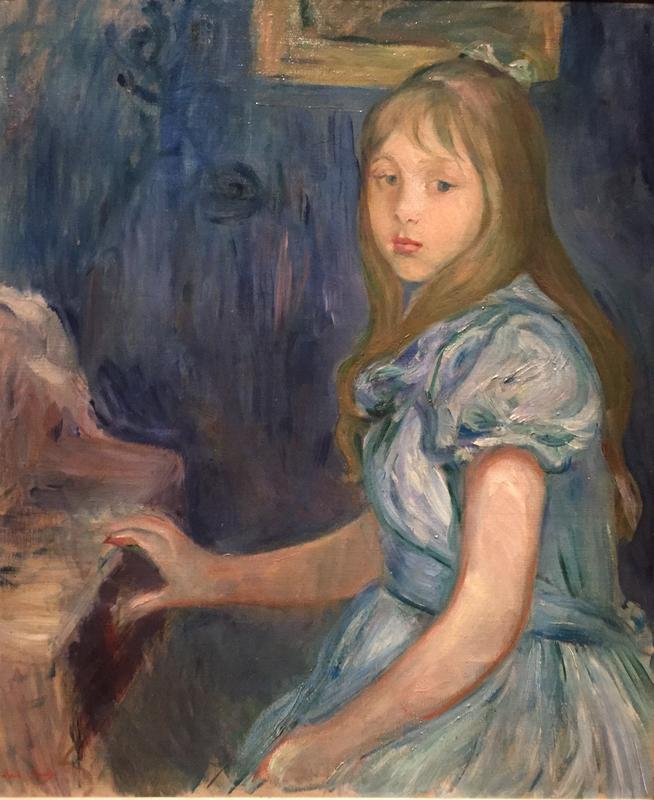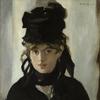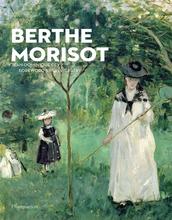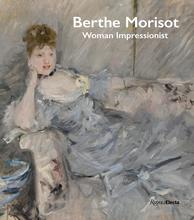More about Lucie Léon at the Piano
- All
- Info
- Shop

Contributor
Lucie Léon at the Piano shows an adolescent girl wanting to be anywhere but having her portrait painted at the piano.
Even though the artist is Berthe Morisot, who has an impressive list of accomplishments: being one of the early members of French Impressionism, made her Salon debut in 1864, participated in seven of the eight Salon exhibitions, painted over 800 images by the end of her life. Still not cool enough for this pre-teen.
Dude, I get it. You’d rather be texting your friends. If only iPhones existed at the time. Actually, according to the painter’s daughter, Julie, who was apparently attending a ‘take your daughter to work day,' Léon preferred to play croquet. Memes, croquet - whatever the activity, anything beats this.
The irony here is that Berthe Morisot was provided with music lessons as an adolescent as well, only to be distracted by one of Jean-Auguste-Dominique Ingres’ drawings on the wall. Morisot is sympathetic to Léon's plight. She’d rather be outside, painting portraits glowing under the sun. We all want to be tanning in the grass on a nice day. The moody blues of this painting contrast to the outdoor scenes Morisot paints, which are filled with light, and where one can breathe in the fresh air. Hold that thought. A pesky law kept French women from walking without a male chaperone, limiting Morisot’s subject matter to the interior domestic life. Despite this law, Morisot began painting outdoors anyways, having discovered 'en plein air' painting in 1864. She utilized natural light, which would come to define the Impressionist style.
But still, Morisot remained the quintessential painter of contemporary Parisian women, painting women in their domestic duties. Lucie Léon at the Piano is one of the paintings showing interior life of an upper-class girl, who incidentally went on to become a celebrated concert pianist. Julie still maintains that Léon was “an unbearable model.” Morisot’s professionalism didn’t waver, according to Julie, “because Mama overcame most problems in life, she managed to do a marvelous portrait of her.” Props to Julie for remining Morisot’s cheerleader in the room. She goes on, “Lucie is jolly lucky to have this magnificent work of art after doing nothing to deserve it.” If you were raised by a bunch of kooky Impressionists, and your superstar mother had an ungrateful girl for a subject, you’d think them undeserving of a portrait, too.
Sources
- Higonnet, Anne, Berthe Morisot. Berkley: California University Press, 1995.
- Manet, Julie, Growing up with the Impressionists: The Diary of Julie Manet. London: I.B. Taurus and Co., 2017.
- Hughes, Kathryn. “Berthe Morisot: the Forgotten Impressionist.” The Telegraph, December 13, 2010. Accessed July 2, 2019. https://www.telegraph.co.uk/culture/art/8186673/Berthe-Morisot-the-forg…
- McConkey, Kenneth, Impressionism in Britain. London: Yale Univeristy Press, 1995.
- Truitt, Anne. “A First Impressionist.” The New York Times, June 3, 1990. Accessed July 1, 2019. https://www.nytimes.com/1990/06/03/books/a-first-impressionist.html
- Smee, Sebastian. “You know Monet and Manet. This female Impressionist deserves your attention, too.” The Washington Post, August 21, 2018. Accessed July 2, 2019. https://www.washingtonpost.com/entertainment/museums/you-know-monet-and…
- Stuckey, Charles F., Scott, William P.. “Morisot.” Art Journal, Vol. 47, No. 3 (1988): 236-241.













